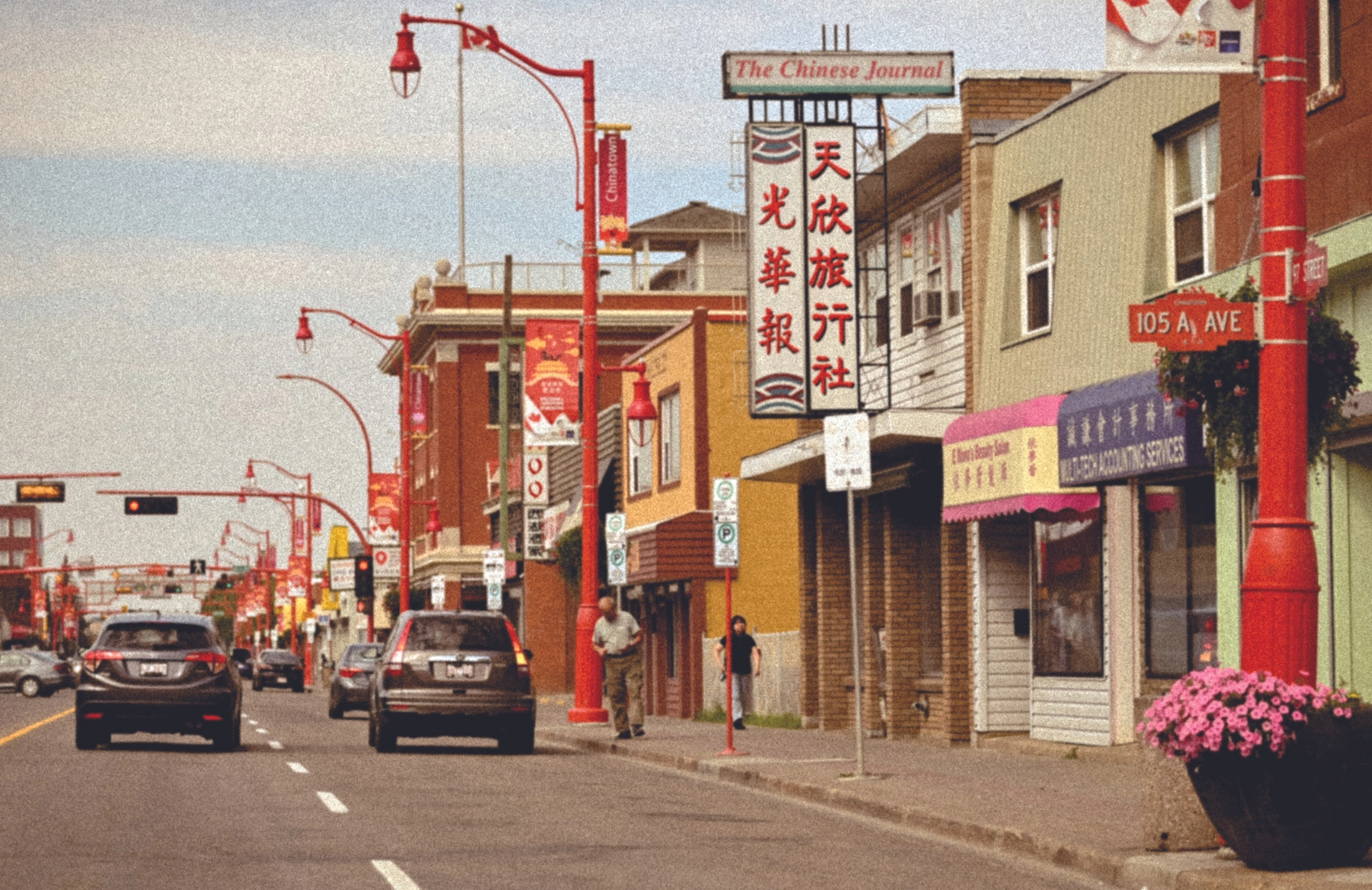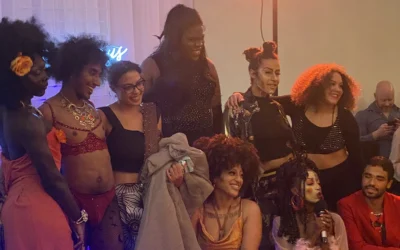What does revitalization look like for Chinatown?
Everyone’s opinion on Edmonton’s Chinatown differs.
For some, it’s the thriving heart of downtown; an area ripe with unique experiences. It’s a community that allows its members to build meaningful relationships built on shared experiences, culture, ethnicity, and values.
Others’ perceptions of Chinatown are influenced by other social issues that affect Edmonton. These issues include the concentration of social services in Chinatown, a perceived lack of safety stemming from an 18 per cent increase in downtown crime rates and gentrification (à la Ice District).
Without a clear consensus, I took to Reddit to find some answers. It all started with a simple question: “what are your perceptions on Chinatown?”
The responses I got varied in terms of opinions, but they were all overwhelmingly passionate. Some Edmontonians expressed nostalgia and disappointment that an area they once visited has become too unsafe. Some are undeterred by the presence of encampments and social services; they continue to visit Chinatown and frequent the businesses that they enjoy. An overwhelming number of Edmontonians were brazen with their vitriol to the extent that one user described the area as a “cesspool of human filth”.
My Reddit post piqued the interest of Jenny Trinh, a team member from the grassroots revitalization Re:VITA. These revitalization groups are partly funded by grants offered through the city of Edmonton’s recovery fund. Groups like Re:VITA organize events, clean ups, and projects that aim to promote Chinatown’s recovery.
“We want to capture more moments of fun, vibrancy, memes, and create evidence of other things happening aside [from] the grim pessimism. If you don’t… then what’s there to look forward to?”
Jenny Trinh, Re:VITA member
Trinh invited me to the banh mi restaurant Van Loc to discuss Chinatown’s revitalization and its situation. Over Vietnamese subs, she described Re:VITA’s event Chinatown After Dark. On July 29, people gathered in the back alleys behind the China Marble Restaurant. The event included karaoke, food vendors, and pineapple bun ice cream sandwiches.
Trinh was surprised to see such a high turnout for the event. “Because it’s an alleyway… in Chinatown! What image does that put in peoples’ heads knowing the state of Chinatown right now?” Despite the stigma around the neighbourhood, there were still families coming out to the event. “It was really encouraging to see that people who do want to come out, then they will come out.”
For Trinh, events like Chinatown After Dark bring her community together. In great detail, she described upcoming events and activities such as a car meet, a festival, D&D sessions, and another night market.
Re:VITA was created by volunteers like Trinh. Many of Re:VITA’s members connected with each other through community clean ups organized by the Chinatown Transformation Collaborative Society (CTC).
Although the funding for the clean ups ceased, many of the volunteers connected with each other through a discord server. Re:VITA was born from the collective passion volunteers had toward revitalizing Chinatown.
Trinh provided a tour of Chinatown and stopped by all of the businesses that she thought I’d enjoy. With her in-depth knowledge of the businesses in the area, I wouldn’t have been surprised if she had a secret life as a tour guide. But, she’s just someone who cares deeply about Chinatown.
When we travelled down 98 St, we saw encampments where displaced individuals walked down the sidewalk and congregated near the Hope Mission building. Trinh expressed disappointment that people have such a shallow view of social disorder and homelessness.
“It’s just really bad here because the social services are centralized in this area which has made the issue look a lot worse because it’s in the downtown core.”
If social services were dispersed throughout the city, would people have a different view of Chinatown? Perhaps then, people would be satisfied with the area.
But, nobody wants social services in their neighbourhood. As a result, Chinatown’s community has to shoulder the responsibilities of community maintenance while receiving criticism from Edmontonians.
Even Trinh, whose background includes social work, didn’t deny how overwhelming the situation is. “It’s a compassionate burnout from that expectation to accommodate.”
Jordan Hon has a different opinion on Chinatown revitalization. Hon curated Untouchable Chinatown which is a photography project integrating the voices of Chinatown. When we met in the Hull Block, I watched as he cleaned up the exhibition space.
“You don’t want to feel like you have to justify the existence of a place, especially like a place where it’s a community kind of having to perform.”
Jordan Hon, lead artist and curator of Untouchable Chinatown
“It’s weird to now be like, Chinatown should be this trendy, hip, clean, gentrified place where everyone can feel like they can find something good to eat and hang out,” says Hon. “To only paint it as this thing and try to convince people to come to that and to help develop that feels very surface level to me.”
Hon described Chinatown as a symbol of Chinese culture, rather than a physical location. When I pressed him about some redditor’s comments about Chinatown ‘dying’, he seemed unfazed.
“Chinatowns have existed and they will continue to exist in some form or another,” says Hon, “so the question is, do you want to support the vulnerable people in our society or do you want to just go eat tasty food?”
Regardless of Edmonton’s physical Chinatown location, the concept of Chinatowns won’t simply disappear. Hon says that the physical location of Chinatown was created in the 1980s, but Chinese settlers formed a community in Edmonton — even if it was previously in the Southside.
Initially, I suspected that Trinh and Hon would dismiss other Asian restaurants in the city – places like Dorinku, Tropika Malaysian Cuisine, and the new popular restaurant Fu’s Repair Shop. In particular, I wondered if they viewed Fu’s — which became a hit over the summer – as a sign of gentrification.
The restaurant plays into orientalist tropes with its decor, but the executive chef, Winnie Tsing Chen based the menu on her own experiences as a Chinese woman growing up in Edmonton.
“Winnie buys from local vendors in Chinatown,” said Kyla Kazeil, the designer and marketing director of Fu’s. “We try to support [the community] even if we’re not in Chinatown.”
Neither Trinh and Hon saw the harm of other businesses operating elsewhere.
“People will set up shop elsewhere…,” says Trinh. “There’s mom and pop shops that have their own charm and their own energy that you won’t see elsewhere. You can feel it. I can’t explain it.”
Hon’s perspective was a lot more nuanced.
“I don’t know if they are using Chinatown, they’re kind of using more of this Orientalist like trope of their decor. I think as long as it’s invested into the community, and it does … provide a platform for people to learn more, and maybe even a satirical way of flipping it, that could be really cool,” said Hon.
It’s easy to look toward a restaurant like Fu’s and transfer indignance and frustration about Chinatown’s state onto it. Maybe, it’s really not that simple.
Hon says, “but when I focus on Chinatown and see how the push and pull of politics and policy and organizers and the hurdles they have to go through, it’s really giving me a clearer sense of where I live … I love Chinatown because it’s a real accurate snapshot of how Chinese Canadians have come to this land and how they’ve been treated all the way up until present day.”





0 Comments